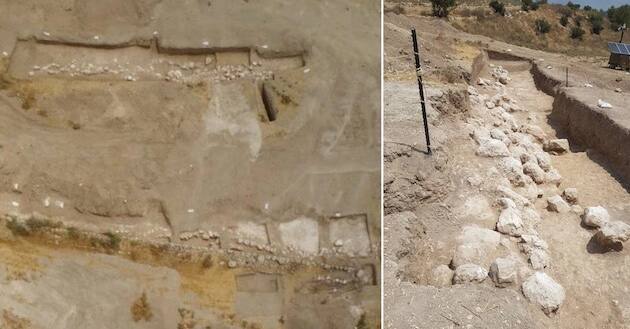The Israeli Antiquities Authority continues to pour over amazing finds dating to the Old Testament city of Zanoah. Discovered are a stone wall, pottery and other artifacts dating back more than 3,200 years. The team also uncovered a broken jar handle that featured the name of a king described in the Bible, providing more evidence to the biblical story of Moses.
The exodus story begins with the Israelites enslaved in Egypt before the pharaoh, coerced by 10 terrible plagues, grudgingly agrees to release them, and Moses leads them across the miraculously parted Red Sea. After they reached the Sinai Peninsula, scripture says they traveled to Mount Sinai, where Moses received the 10 commandments. The group then headed to the southern border of Canaan but being too scared to enter, they were condemned to spend decades in the wilderness by God.

Archaeologists also recovered well preserved pottery, complete with an LMLK stamp on the jar handle which is very rare in the Judah foothills. These markings are ancient Hebrew seals meaning ‘of the King’
After passing years at the oasis of Kadesh Barnea, the Israelites then traveled to the eastern border of Canaan, where Moses died and was buried on Mount Nebo. In the subsequent book of Joshua, Joshua takes over the leadership of the Israelites, leading them into the Promised Land across the River Jordan and conquering Jericho, and Zanoah is mentioned in the book of Joshua. Joshua 15:34,56 outlines the boundaries and cities within the tribal allotment of Judah after they entered the Promised Land, which includes Zanoah.

The shard had a wide rim with three concentric bands in a grid-like pattern and featured a rope decoration
The research team uncovered walls fashioned with rows of large, white rocks, which they believed were retaining walls for farming terraces used to create level areas for planting and to protect steeper soil from erosion. Preserved pottery also was pulled from the ground, with one piece featuring a stamp on the handle that read “of the king,: which was to honor King Hezekiah’s reign in Judah in 701 BC. The life of Hezekiah is described in the Bible book of II Kings, chapters 18-20.
READ: Works of Hezekiah studied
Pottery fragments littered the landscape, with about 20 percent dating to the time the Israelites were said to have arrived after 40 years of wandering in the wilderness. The rest were fashioned over the next 900 years, including a decorated fragment of a cosmetic bowl made of white limestone. “It has a wide rim adorned with a decoration of three concentric bands separated by gaps: the external and internal bands are narrow and feature a rope decoration, while the central band is wide and features an intermittent grid pattern,” researchers said.
–Dwight Widaman | Metro Voice








